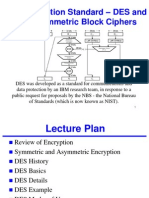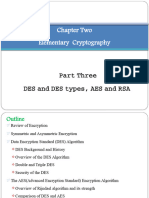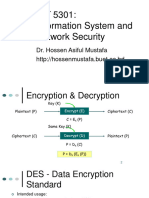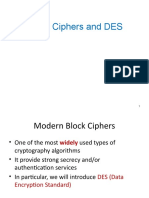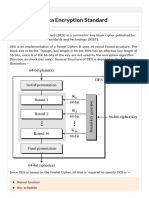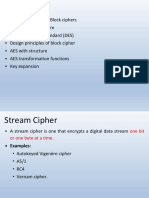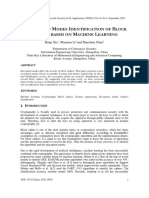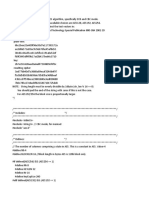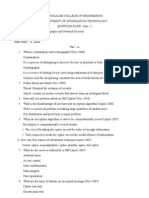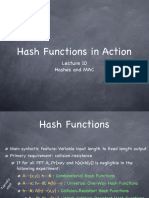0% found this document useful (0 votes)
8 views9 pagesComputer and Network Security Group Assignment
The document provides an overview of computer network security, focusing on the Data Encryption Standard (DES) and its structure, including key generation, encryption, and decryption processes. It also discusses Double and Triple DES, highlighting their enhancements over the original DES, and introduces the Advanced Encryption Standard (AES) as a more secure alternative. Additionally, the document covers block cipher modes of operation, detailing their functionalities and security implications.
Uploaded by
Amir tofikCopyright
© © All Rights Reserved
We take content rights seriously. If you suspect this is your content, claim it here.
Available Formats
Download as DOCX, PDF, TXT or read online on Scribd
0% found this document useful (0 votes)
8 views9 pagesComputer and Network Security Group Assignment
The document provides an overview of computer network security, focusing on the Data Encryption Standard (DES) and its structure, including key generation, encryption, and decryption processes. It also discusses Double and Triple DES, highlighting their enhancements over the original DES, and introduces the Advanced Encryption Standard (AES) as a more secure alternative. Additionally, the document covers block cipher modes of operation, detailing their functionalities and security implications.
Uploaded by
Amir tofikCopyright
© © All Rights Reserved
We take content rights seriously. If you suspect this is your content, claim it here.
Available Formats
Download as DOCX, PDF, TXT or read online on Scribd
/ 9
